Third tabletop exercise on emergency assistance in case of biological weapon use – First impressions
The day after the presentation of the report on the Article VII tabletop exercise (TTX) held in Lomé, Togo on 29 and 30 May to the states parties of the Biological and Toxin Weapons Convention (BTWC), the Fondation pour la recherche stratégique (FRS) and the BTWC Implementation Support Unit (ISU) ran another TTX in the United Nations building in Geneva. This time the focus was on a series of anthrax outbreaks that affected mostly herd animals, but also led to multiple human casualties. The scenario was a deliberate attempt to break with the habitual simulations of increasingly dire human pandemics. After all, the BTWC covers biological weapon (BW) use against animals and plants too.
Held at the tail end of the 2019 series of BTWC Meetings of Experts (MX), the exercise benefited from the participation of over 50 people, including more than 30 country representatives, both diplomats and experts from capitals who had flown in for MX4 on Assistance, Response and Preparedness (6–7 August 2019), officials from international organisations (FAO, INTERPOL, OCHA, OIE, UNODA, and WHO), civil society representatives and other experts. Of the three TTXs, this one was by far the largest.
Like the two previous exercises, a grant from the French Ministry of Foreign Affairs supported the running of this TTX too.
Scenario
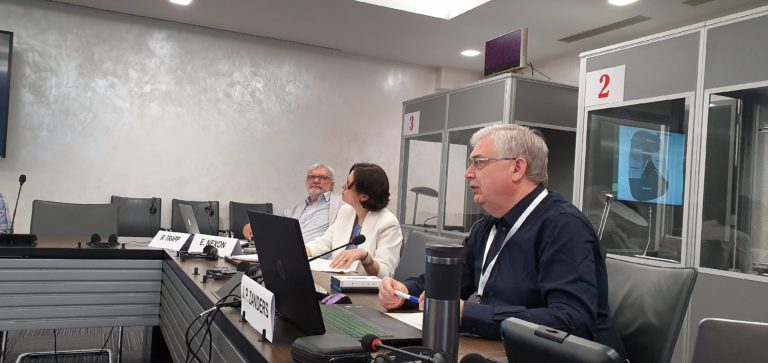
The scenario unfolded on a hypothetical continent, Earthland. Its largest country, Rodinia, had broken apart into four sovereign entities, namely Rodinia, Pannotia, Middle Earth and Gondwana. Except for Middle Earth, which does not share a border with Rodinia, all new countries suffer from border conflicts driven by ethnic and economic rivalries that had already led to the breakup of Rodinia. Ethnic minorities in the west of Rodinia support insurgent forces that have major staging grounds inside Gondwana. Earthland’s northernmost state, Laurasia, has been a staunch supporter of Rodinia since before the breakup, but has lately been consolidating economic and cultural ties with Gondwana and become more vocal in its criticism of Rodinia’s economic and social discrimination, if not persecution of its minorities. In the south of Earthland lies Laurussia, which has effortlessly mediated in the conflict and attempted to address social inequalities through targeted economic investments in the new countries.
Last year
Last year a counter-insurgency operation by Rodinian security forces in the border area with Gondwana suddenly led to a major escalation in fighting. Press reports indicated that security forces had discovered several important weapon storage sites inside Rodinia. While recovering the arms, munition and other supplies, a significant force of insurgents ambushed them. Military officials believed that they had a major staging area inside Gondwana just west of where the borders of Rodinia, Gondwana and Pannotia meet. They said that the insurgents mounted a two-pronged attack with one force attacking the security forces from the east after having entered Rodinia via Pannotia. Taking the Rodinians by complete surprise, the bold move caused them heavy losses. Combat operations in south-west Rodinia continued for several months and led to some international incidents as Rodinian forces several times crossed into Gondwana pursuing the insurgents.
Some weeks into the fighting press sources in Gondwana began reporting several mysterious deaths among insurgents and villagers living in the south-east of the country. According to local testimonies, all victims began bleeding from their nose and gums and in shortly thereafter started coughing up or vomiting blood. They died in agony soon afterwards, often while being evacuated to medical facilities in the interior. After three to four weeks no new cases were being reported. The outbreak remained localised and disappeared as quickly as it had emerged, puzzling health officials in the capital.
Laurussia had quickly stepped in and through frantic shuttle diploma between Rodinia and Gondwana, as well as informal, but urgent discussions with insurgent leaders, it managed a cease-fire. By and large, all parties have honoured the agreement, but the situation remains tense as evidenced by some brief skirmishes.
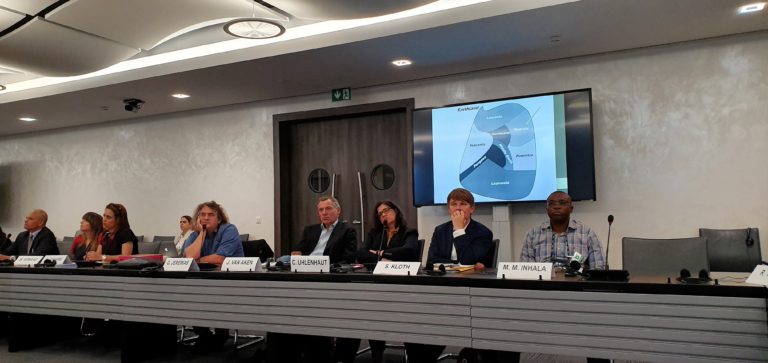
In hindsight, the upsurge in violence has demonstrated two inescapable truths, which have been evident to regional experts for a while.
First, with Laurasia’s reduced security assistance, Rodinia is no longer able to secure its border from insurgent incursions. Its intelligence is wanting, and the leadership no longer seems to have a good picture of insurgent activities on its own territory and in the areas immediately across the border in neighbouring countries. Last year’s events caused a major shock to the security establishment and despite the replacement of some senior figures, the situation has not improved much since then. Requests for supplemental assistance to Laurasia have been rebuffed. Instead, Laurasian government officials have criticised Rodinia’s military response and atrocities and suggested that the country should begin to implement more inclusive social and economic policies to remove the root causes of the never-ceasing conflict.
Second, as the short but intense outbreak illustrated, the conflict has debilitated health infrastructure in the region where Gondwana, Pannotia and Rodinia meet. That part of the continent has always been prone to seasonal disease outbreaks. Regional travel usually ensures that infection crosses porous borders. After the secession war ended, the three countries together with Middle Earth had set up with the assistance from Laurussia a network of small health facilities that seconded as an early outbreak detection system. Via monitoring centres in the respective Ministries of Health the four countries have been mostly successful in containing epidemics in their early stages. They also tended to allow health workers from both regional and international organisations, as well as international non-governmental humanitarian associations, unfettered access to the region. The area’s relative remoteness from the main population centres also helped in containing outbreaks.
After last year’s outburst of violence, the network of health facilities exists in all but name. More importantly, communication among health workers based in the different countries is now virtually non-existent and many international organisations have pulled out or greatly reduced their staff in the region. One of the consequences was the necessity to evacuate the victims of the sudden outbreak during the fighting to the centre of Gondwana. The delay in medical treatment undoubtedly contributed to the high death toll among affected people. Moreover, for want of diagnostic capacities, nobody has been able to establish for certain the nature of the outbreak or its origin. Initial assessments referred to a viral haemorrhagic fever; however, nobody could explain why no relatives or attending medical volunteers succumbed to the infection.
Renewed fighting and anthrax outbreak
The border conflict between Gondwana and Rodinia flared up again just over three months ago. Unseasonable heavy rains last month, however, abated the fighting. Before Rodinian forces and Gondwana-based rebels had frequently skirmished on both sides of the border and twice engaged in longer fighting lasting several days. The flooding has by now receded in most parts affected by the downpours. Contrary to some expectations, hostilities have not regained the level of violence seen before the rains. Most areas have remained quiet and local villagers have been trying to return to some degree of normalcy in their daily routines.

Early last week Gondwanan media mentioned in passing an anthrax outbreak affecting cattle at a watering hole close to where the country’s eastern border meets with Rodinia and Pannotia. The short, matter-of-fact reports expressed no particular alarm as anthrax is indigenous to the region and rains tend to occasion some infections. Two days later, a newspaper article cited a traveller who had just returned from the region to capital that there are several human casualties too, including some fatalities. The traveller described local farmers butchering seriously sick animals and cutting up cadavers to salvage the meat. He witnessed some persons with black skin lesions and noted that mostly women and one or two elderly persons had succumbed to the disease, speculating that they may have eaten meat from the slaughtered or scavenged animals. He pointed out the lack of adequate medical infrastructure and personnel in the area as a consequence of the long-lasting conflict. He feared that more people may die and that the disease might spread, as the meat is not just a major nutritional source, it is also a significant trading commodity with nearby villages, including in Rodinia and Pannotia.
Reports on the outbreak gained more prominence, especially since some patients have been evacuated from the region. However, a regional paper broke the news of another anthrax outbreak about 120 kilometres north of the first site. Commentators remarked on the apparent coincidence in time with the earlier reported epizootic disease and the same circumstances near a second watering hole. Similarly, a third source of infection is cited, this time to the south of the first reported epidemic, close to the border between Gondwana and Pannotia and only a few kilometres away from Middle Earth.
One journalist writes today that near-simultaneous outbreaks of anthrax, at least on the scale presently seen, are as good of unheard of. In her piece, she speculates that the first two reported incidents coincide with the areas of heaviest fighting before the rains broke. The third one, she continues, seems to affect what might have been the staging ground for last year’s second pincer movement that cut though Pannotia to attack Rodinian security forces from the south.
A politician quickly picks up on the inevitable conclusion a reader has to draw from the journalist’s article. At a press conference in the parliament building, he reminds the audience of the unusual affliction, which he termed a haemorrhagic fever, that affected numerous refugees and locals during last year’s hostilities. He adds that this eruption took place in the same region as the current first reported anthrax outbreak. While he stops short of accusing Rodinia, the implications of this reference are clear to all those attending.
[As an aside, participants were informed at a later stage of the scenario that a recently published scientific paper looking into the suspected haemorrhagic fever incident had concluded that people were exposed for a significant period to an anticoagulant rodenticide like brodifacoum.]
And the plot advances…
The TTX unfolded through the actions of three countries, namely Gondwana (victim of the outbreak), Laurasia (Rodinia’s supporter) and Laurussia (the mediator, where also the reference laboratory is located). Rodinia, the all but accused initiator of the anthrax attacks, was not played because the country had limited opportunities to evolve as the scenario progressed. Instead, it remained visible in the background through Laurasia, which continued to defend its interests, all the while growing increasingly critical of Rodinia’s domestic security policies.
Participants were evenly divided over the three countries and care was taken that the mix of professional backgrounds in each group was roughly equivalent. They made up a crisis committee that had to advise the government on actions to be taken. For each proposed option they had to list advantages and disadvantages and recommend a particular course. They were thus not the decision makers; rather expert advisers to the president or prime minister.
For the first time in the series of TTXs, they also got a specific assignment in function of their real-life expertise. Each group was thus subdivided into military-security, policy, and emergency assistance. The third phase foresaw multilateral interaction between the three countries with regard to triggering Article VII. Members of each subgroup had to negotiate a compromise solution to avoid escalating the crisis and then return to ‘capital’ to see whether it was possible to revise the national position on the health emergency in view of the proposed compromise.
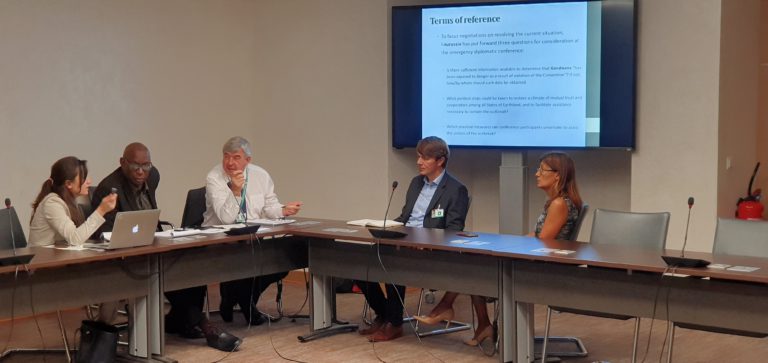
The presence of several international organisations that would likely be involved in a real-life outbreak helped participants understand their respective contributions and limitations. Officials from these organisations sat in with the breakout groups, but did not form part of the ‘national’ decision-making process. They advised and also circulated among the three groups. In some instances, a breakout group called upon a specific representative for urgent advice on a particular issue. This was the first TTX that actively involved international organisations.
Contrary to both earlier TTXs, the question as to whether Article VII would be triggered was not part of the script. The decision lay entirely in the hands of the participants. As the outcome could not be foreseen in the exercise design, the third phase thus ended with a mere plenary declaration of each country’s new national position. In the fourth and last session each group was tasked to evaluate national decision-making and clarify the conditions that helped to shape their final position. The respective evaluations were presented and discussed in the final plenary session.
Some initial thoughts
Discussions proved extremely rich. Issues participants took into consideration included epidemiological data gathering to gauge the nature and size of the outbreak, information sharing obligations and restrictions among states and with international organisations, public crisis communication, weighing priorities between addressing the health crisis and responding to the many indications that the outbreak may have been deliberate, assessing the consequences of involvement by the UN Security Council (UNSC) following invocation of Article VII, and so on. The outcomes of these deliberations still need to be fully assessed with regard to the BTWC and its Article VII.
Three elements stood out in my mind, namely the applicability of Article VII to the scenario; the uncertainties resulting from the lack of data on the size of the anthrax outbreak and informed estimates of animal and human casualties; and the absolute need to avoid conflict escalation lest the outbreak would become uncontrollable.
Applicability of Article VII
One primary objective of this TTX was to test the concept of ‘crisis’. Under which circumstances is the international community willing to trigger Article VII following alleged BW use? Must a health crisis amount to a humanitarian crisis (e.g. the Ebola outbreaks in West Africa and Congo) before action could be undertaken? Given that humanitarian emergency responses are often discussed in relation to major outbreaks of human diseases, does Article VII apply to animal and plant pathogens too (both of which are covered by the BTWC)?
The scenario began with an outbreak of a zoonotic disease, anthrax, that is not easily communicable among humans. The primary victims were cattle herds near watering holes; human victims resulted from the ways in which they interacted with the diseased animals and carcasses: butchering and consuming or selling meat, open pit burning of carcasses, etc. Even when the indications started mounting that the outbreaks were neither natural nor accidental, the scenario never suggested that humans were the primary target of the BW attacks.
All breakout groups accepted the applicability of Article VII to a zoonotic outbreak. Several people suggested that it was up to the victim state to decide whether and when to invoke the provision. Rodinia (the alleged perpetrator, whose interests were represented by Laurasia) questioned the overall relevancy of the BTWC because it posited that the outbreak was natural in the wake of the rains. Hence its refusal to take part in diplomatic exchanges.
Uncertainty about the scale of the outbreak
The scenario and instructions for the breakout groups deliberately left out indicators about the size of the anthrax outbreak. Given that the plot unfolded in three discrete stages, it also remained mum on the speed of developments. Both omissions intended to test the concept of ‘crisis’ too.
The TTX design accepted two possible pathways. Either participants would ‘conduct’ their own epidemiological investigation and thus define the nature of the outbreak, or they would not, in which case decision-making would have to take much uncertainty into account. The latter option was in line with the general background description (reproduced above) that the outbreaks took place in a remote, conflict-ridden part of Gondwana where most of the health infrastructure had been destroyed or neglected after staff had left. The scenario did include some qualitative hints about the evolution of the crisis, such as reports of cases in neighbouring Middle Earth, the emergence of some cases of human inhalational anthrax following the burning of carcasses, the spread of bacteria via scavenging birds, and so on.
Under the first option, participants could have unconsciously displayed broad consensus about how big the crisis had to be in an Article VII context. Subsequent probing in plenary discussion would then have tested the premises of those assumptions. As it turned out, Gondwana was unable to scope the outbreak leaving its crisis committee as well as other countries in uncertainty about developments. It managed to retrieve a sample of the bacteria and transfer it to the reference laboratory in Laurussia. Despite the uncertainties – did five persons or a few hundred die?, as one participant wondered – potentially low figures did not challenge the view that Article VII was applicable to the scenario.
Just for reference, in a research article entitled Reanalysis of the anthrax epidemic in Rhodesia, 1978–1984 (2016) Wilson et al. estimated that the anthrax outbreak during the Rhodesian insurgency covered an geographic area of 245,750 sq. km and resulted in 171,990 cattle and 17,199 human cases, including more than 200 fatalities. The authors (p. 16) also cited a purported anthrax epidemic in Haiti in 1770 that killed 15,000 indigenous and European people over a period of six weeks.
Avoidance of conflict escalation
Participants agreed with the finding of the previous two TTXs that invoking Article VII carries the risk of escalating the conflict thereby potentially hampering containment and relief operations. At the Lomé exercise last May, people professionally involved in crisis management and operations called for a decoupling of the assistance request under Article VII and the question of a serious violation of the BTWC (which in their mind could be addressed after the epidemic was under control) so as not to hamper any humanitarian interventions already underway. One way to achieve this was to have consultations among BTWC states parties before forwarding any request to the UNSC. However, the Lomé participants also cautioned that any diplomatic interactions cannot last long because there is no break on the spread of an epidemic.
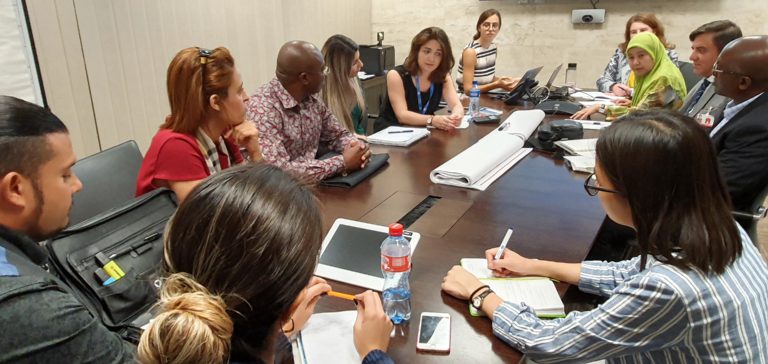
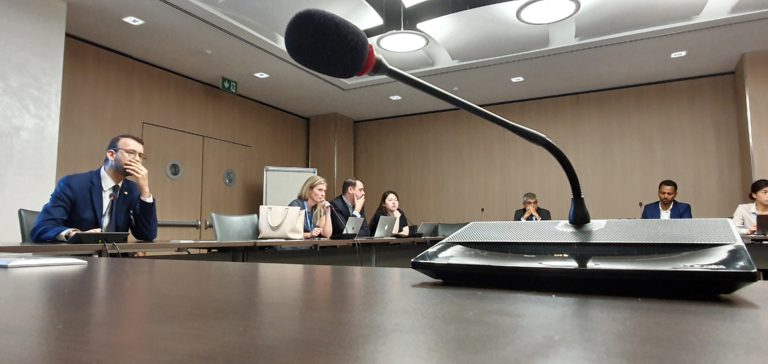
The third TTX intended to test a scenario in which a consultative meeting foreseen under BTWC Article V would be called. However, even in the design stage it quickly became clear that the thought might be impossible. The time constraints discussed in Lomé contradicted the formal process required to convene a meeting and span needed to allow states to assess available evidence. The phrasing of Article V [The States Parties to this Convention undertake to consult one another…] and the requirement to address the request to the depositary states (agreed at the Third Review Conference and subsequently confirmed) cast doubt on whether it is possible for a (regional) subset of states parties to call for an Article V meeting among themselves (even if open to other interested states parties). Consequently, the TTX scenario relied on another agreement reached at the Third Review Conference (and subsequently confirmed) that ‘A formal consultative meeting could be preceded by bilateral or other consultations by agreement among those States parties involved in the problems which had arisen’. Thus, Laurussia issued urgent invitations referring to, rather than invoking Article V to the other Earthland countries after it became clear that Gondwana was on the verge of sending an Article VII request to the UNSC. This set up the scene for the negotiation sessions in phase 3 of the exercise. Gondwana withheld the sending of the letter to prioritise the provision of assistance.
Gondwana’s reasoning was interesting. It basically believed that there had been a major breech of the BTWC and that Rodinia was responsible for the outbreak but chose not to formally accuse its neighbour. In doing so, it accepted Laurussia’s proposal emphasising assistance and diplomatic engagement to bring the conflict to an end, notwithstanding its reservation that it might still call out Rodinia at a later stage if the proposed efforts were to falter. Laurasia’s willingness expressed during the negotiations to contribute to the assistance operations and actively engage with Rodinia in pursuit of a negotiated resolution of the conflict helped to convince Gondwana.
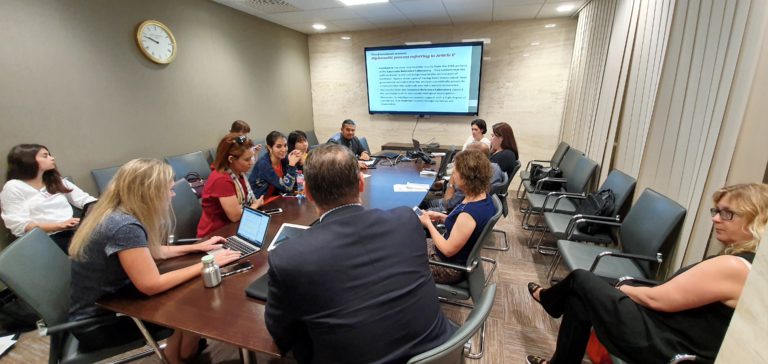
Now, this outcome is interesting. Since the BTWC’s entry into force in 1975, all major compliance concerns – the anthrax outbreak near Sverdlovsk following an accidental release from a Soviet laboratory in 1979, the so-called ‘yellow rain’ allegations in southeast Asia during the late seventies and early eighties, the ongoing western allegations about the continuation of the BW programme after the breakup of the USSR, etc. – have all been dealt with bilaterally or trilaterally outside of the BTWC framework, while other countries deplore the lack of verification or investigative tools to make the convention really multilaterally effective.
Does the outcome of the TTX confirm this tendency? Did the TTX point to a certain underlying logic that results from the way the BTWC was set up? This definitely is a point that warrants further research.
